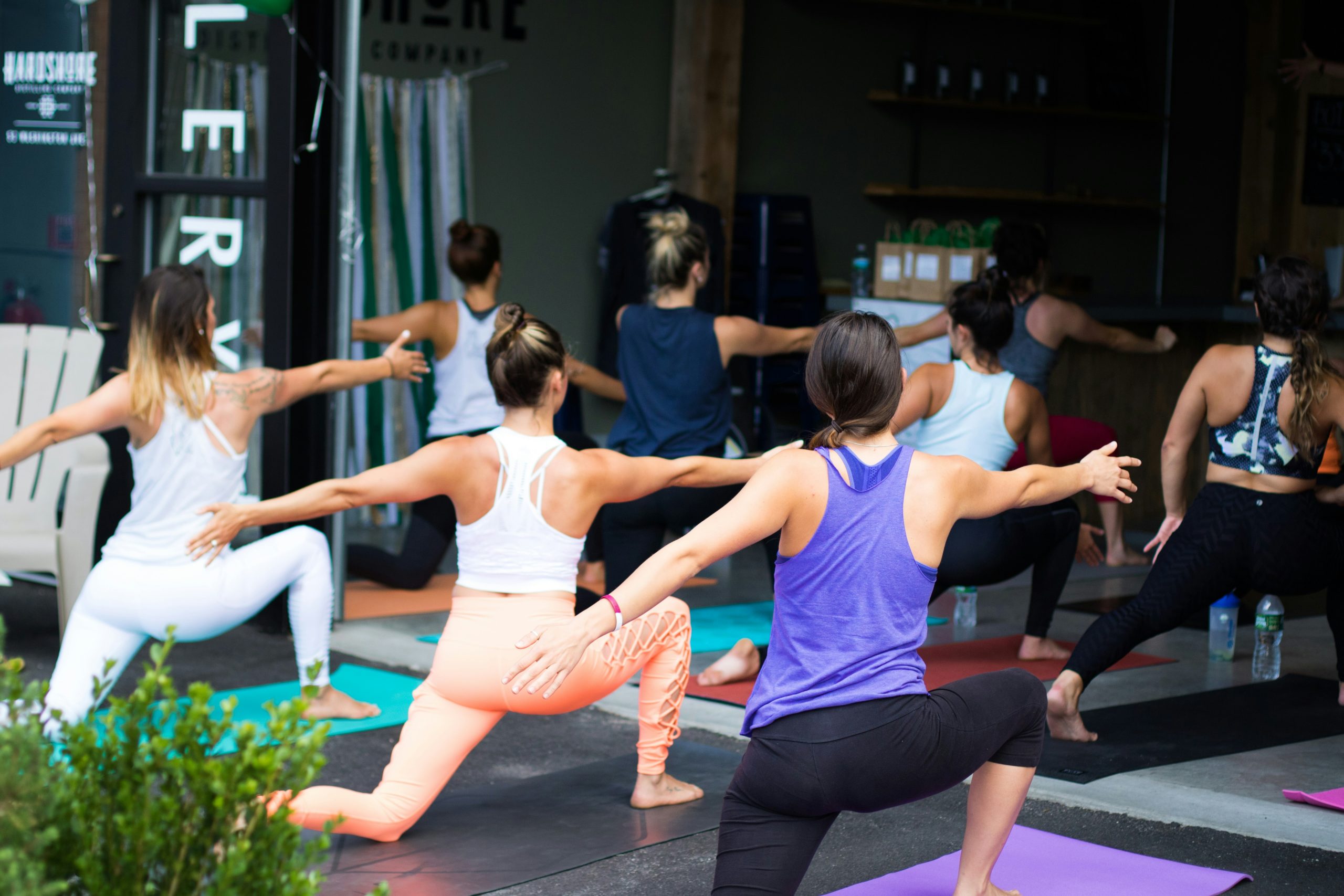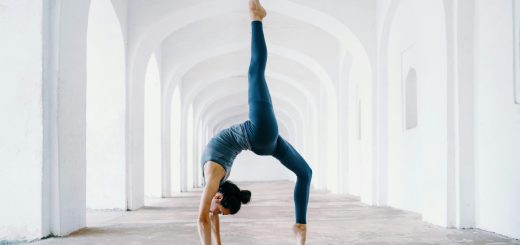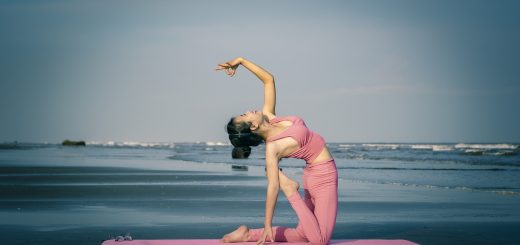Wheel Pose Yoga: Open Your Heart and Expand Possibilities

Hey there, amazing readers! 🖐️ Just a quick note: yes, we know there are a lot of ads here. Trust us, we get it—it’s not the prettiest look, but they help us keep this blog alive and kicking. Those pesky little ads cover the costs of all the behind-the-scenes magic, from hosting and tech stuff to creating content we hope you’ll love.
We’re committed to delivering quality posts, and your support (even just sticking around despite the ads) means everything to us. So, bear with us, and thanks for helping us keep the good vibes rolling. Now, on to the fun stuff! 😉
TRANSLATE BUTTON AT THE END OF THE ARTICLE
Introduction: The healing power of Wheel Pose Yoga
Wheel Pose Yoga, also known as Urdhva Dhanurasana, is a powerful backbend posture that provides numerous physical and mental benefits.
This heart-opening asana not only stretches and strengthens the body but also helps to release emotional tension and promote a sense of well-being.
By opening the chest and expanding the possibilities within, Wheel Pose Yoga allows us to tap into our inner strength and embrace transformation.
Whether you are a beginner or an experienced yogi, incorporating Wheel Pose into your practice can bring about profound healing and growth.
Benefits of Wheel Pose Yoga: Physical and mental well-being
Physical Benefits: Wheel Pose Yoga is a full-body asana that engages various muscle groups, providing strength and flexibility to the entire body.
This pose strengthens the arms, legs, and core, while simultaneously stretching the chest, shoulders, and hip flexors.
It also stimulates the thyroid and pituitary glands, thus improving overall hormonal balance.
Regular practice of Wheel Pose can help alleviate back pain, improve posture, enhance digestion, and boost energy levels.
Mental Benefits: In addition to the physical benefits, Wheel Pose Yoga has a positive impact on mental well-being.
This heart-opening posture promotes feelings of joy, love, and compassion by releasing stored emotions and tension held in the chest.
Wheel Pose also stimulates the nervous system, increasing mental clarity and reducing stress and anxiety.
The practice of this asana can leave you feeling uplifted, rejuvenated, and with a greater sense of self-confidence.
Step-by-step guide: How to perform Wheel Pose Yoga
Follow these steps to safely and effectively practice Wheel Pose Yoga:
Lie on your back with your knees bent and feet hip-width apart, close to your buttocks.
Place your hands alongside your ears, fingers pointing towards your shoulders.
Press your palms and feet firmly into the ground, engaging your core muscles.
Inhale and lift your hips off the ground, coming into a bridge pose.
Exhale and slowly straighten your arms, lifting your head and shoulders off the ground.
Extend through your legs and roll onto the tops of your feet, balancing on your hands and feet.
Keep your elbows parallel and aligned with your shoulders, avoiding any strain on the wrists.
Press your chest forward, opening the heart and lifting the spine.
Hold the pose for several breaths, maintaining a steady and relaxed state.
To release, tuck your chin into your chest and slowly lower down, one vertebra at a time.
Preparing your body: Warm-up exercises for Wheel Pose Yoga
Before attempting Wheel Pose Yoga, it is essential to warm up the body and prepare it for the backbend.
Here are a few warm-up exercises to incorporate into your practice:
Cat-Cow Stretch: Begin on all fours, and as you inhale, arch your back, lifting your tailbone and chest towards the ceiling.
As you exhale, round your spine, tucking your tailbone and bringing your chin towards your chest.
Repeat this movement several times to warm up the spine.
Bridge Pose: Lie on your back with your knees bent and feet hip-width apart.
Press your feet and arms into the ground, lifting your hips up towards the sky.
Hold for a few breaths, then slowly release back down.
This pose helps to open the chest and strengthen the back muscles.
Cobra Pose: Lie on your stomach with your legs extended and palms resting on the mat alongside your shoulders.
Inhale, press your hands into the ground, and lift your chest off the floor.
Keep your elbows hugged in towards your body and lengthen through the spine.
Hold for a few breaths before releasing back down.
Key alignment points for a perfect Wheel Pose Yoga
To achieve a perfect Wheel Pose Yoga, it is crucial to focus on proper alignment.
Pay attention to the following key alignment points:
Hand and foot placement: Ensure that your hands are shoulder-width apart and fingers are pointing towards your shoulders.
Feet should be hip-width apart and parallel to each other.
Elbow position: Keep your elbows parallel and aligned with your shoulders throughout the pose.
Avoid letting them splay out to the sides, which can strain the wrists and shoulders.
Engage the core: Activate your abdominal muscles by drawing the belly button towards the spine.
This will provide stability and support to the lower back during the backbend.
Press into the ground: Ground down through your hands and feet, pressing them firmly into the mat.
This will help to create a strong foundation and prevent the wrists from collapsing.
Open the chest: Focus on rolling the shoulders back and opening the chest towards the sky.
This will help to deepen the backbend and expand the heart center.
Modifications and variations of Wheel Pose Yoga
Modifications and variations of Wheel Pose Yoga can be beneficial for individuals with specific needs or limitations.
Here are a few options to consider:
Supported Wheel Pose: If you are new to Wheel Pose or have limited flexibility, use a yoga block or bolster under your hands to provide support.
This will help to ease the intensity of the backbend and allow you to gradually build strength and flexibility.
Bridge Pose: Bridge Pose is a modified version of Wheel Pose that can be practiced as a preparation or alternative.
In Bridge Pose, keep your hands and arms alongside your body, pressing your feet and shoulders into the ground to lift the hips.
Wall-assisted Wheel Pose: Stand facing a wall and place your hands on the wall at shoulder height.
Walk your feet back, bending at the hips, until your body forms an L shape.
Press your hands into the wall and lift your chest, mimicking the shape of Wheel Pose.
This modification provides support and can be used to gradually progress towards the full pose.
Common mistakes to avoid in Wheel Pose Yoga
While practicing Wheel Pose Yoga, it is important to be mindful of common mistakes that can hinder your progress and lead to injury.
Here are a few mistakes to avoid:
Collapsing the chest: Avoid sinking into the lower back and collapsing the chest.
Instead, press the chest forward and lift the sternum towards the sky, creating a strong and open chest.
Straining the neck: Be cautious not to drop the head back too far, straining the neck.
Keep the neck aligned with the spine and maintain a neutral position.
Overextending the wrists: To avoid placing excessive pressure on the wrists, distribute the weight evenly through the hands, engaging the entire palm and fingers.
Avoid collapsing into the wrists, which can cause discomfort and injury.
Forcing the pose: Do not force yourself into Wheel Pose if you are not ready.
Listen to your body and honor its limits.
Gradually build strength and flexibility over time to avoid strain or injury.
Building strength and flexibility through Wheel Pose Yoga
Wheel Pose Yoga is an excellent practice for building both strength and flexibility.
Here are a few ways Wheel Pose can help you achieve this:
Strengthening the back muscles: Wheel Pose engages and strengthens the muscles of the back, including the erector spinae and rhomboids.
Regular practice can alleviate back pain and improve spinal strength.
Opening the shoulders and chest: As you press into Wheel Pose, the shoulders and chest are stretched and opened deeply.
This helps to counteract the effects of sitting and hunching, promoting better posture and increased flexibility in the upper body.
Activating the core muscles: In Wheel Pose, the core muscles are engaged to support the backbend.
Regular practice can help to strengthen the abdominal muscles and improve core stability.
Stretching the hip flexors: The hip flexors, including the psoas and iliopsoas muscles, are lengthened in Wheel Pose.
This can be especially beneficial for individuals who spend long periods sitting, as it helps to release tension in the hips and improve overall flexibility.
Wheel Pose Yoga: A heart-opening experience
Wheel Pose Yoga is often referred to as a heart-opening posture because of its ability to create a deep stretch in the chest and expand the energy of the heart center.
This asana encourages the opening of the heart both physically and energetically, allowing for a greater sense of connection, love, and compassion.
By physically stretching the chest and shoulders, Wheel Pose helps to release tension and tightness in this area.
This can be particularly beneficial for individuals who carry stress or emotional baggage in their hearts, as it provides an opportunity for emotional release and healing.
Furthermore, the heart chakra, known as Anahata in yoga, is associated with feelings of love, joy, and compassion.
Practicing Wheel Pose can help to activate and balance this chakra, allowing us to experience an enhanced sense of emotional well-being and connection to ourselves and others.
The connection between Wheel Pose Yoga and emotional release
Wheel Pose Yoga has the potential to release stored emotions and tension held in the chest.
As we open the heart and stretch the chest, we create space for emotional energy to flow through.
This can lead to a cathartic release of emotions, providing a sense of emotional cleansing and healing.
It is not uncommon for students to experience a range of emotions while practicing Wheel Pose.
Some may feel a sense of vulnerability or resistance, while others may experience a deep sense of joy and liberation.
It is important to approach these emotions with curiosity and compassion, allowing them to arise and pass without judgment.
Through the practice of Wheel Pose, we learn to surrender and let go, both physically and emotionally.
This can be a transformative experience, allowing us to release old patterns and beliefs that no longer serve us and make way for new possibilities and growth.
Wheel Pose Yoga for beginners: Tips and modifications
For beginners, Wheel Pose Yoga can initially feel challenging due to its deep backbend and full-body engagement.
Here are a few tips and modifications to help beginners approach this pose with confidence:
Start with Bridge Pose: Bridge Pose is an excellent preparation for Wheel Pose as it helps to open the chest and strengthen the back muscles.
Practice Bridge Pose regularly to build strength and flexibility before progressing to Wheel Pose.
Use Props: Utilize props such as yoga blocks or bolsters to offer support and reduce the intensity of the backbend.
Place them under your hands to provide extra lift and stability.
Gradually increase flexibility: Practice gentle backbends regularly to gradually increase your flexibility.
Incorporate poses such as Camel Pose, Cobra Pose, and Upward Facing Dog into your practice to help prepare the body for Wheel Pose.
Work with a qualified teacher: If you are new to Wheel Pose or have specific concerns or limitations, it is beneficial to work with a qualified yoga teacher who can provide guidance and adjustments tailored to your needs.
Conclusion: Embrace the transformative power of Wheel Pose Yoga
In conclusion, Wheel Pose Yoga is a powerful asana that offers a multitude of physical, mental, and emotional benefits.
This heart-opening posture stretches and strengthens the body while promoting a sense of inner strength, love, and compassion.
By incorporating Wheel Pose into your yoga practice, you can experience improved physical flexibility, enhanced emotional well-being, and a deeper connection to yourself and others.
Remember to approach Wheel Pose with patience and respect for your body’s limitations.
Progress gradually, listening to your body’s cues and honoring its needs.
With consistent practice, Wheel Pose Yoga can become a transformative and empowering experience that opens your heart and expands the possibilities within.
Embrace the healing power of Wheel Pose Yoga and allow it to guide you on your journey of self-discovery and growth.

The Enlightenment Journey is a remarkable collection of writings authored by a distinguished group of experts in the fields of spirituality, new age, and esoteric knowledge.
This anthology features a diverse assembly of well-experienced authors who bring their profound insights and credible perspectives to the forefront.
Each contributor possesses a wealth of knowledge and wisdom, making them authorities in their respective domains.
Together, they offer readers a transformative journey into the realms of spiritual growth, self-discovery, and esoteric enlightenment.
The Enlightenment Journey is a testament to the collective expertise of these luminaries, providing readers with a rich tapestry of ideas and information to illuminate their spiritual path.
Our Diverse Expertise 🌟
While our primary focus is on spirituality and esotericism, we are equally passionate about exploring a wide range of other topics and niches 🌍📚. Our experienced team is dedicated to delivering high-quality, informative content across various subjects ✨.
To ensure we provide the most accurate and valuable insights, we collaborate with trusted experts in their respective domains 🧑🏫👩🏫. This allows us to offer well-rounded perspectives and knowledge to our readers.
Our blog originally focused on spirituality and metaphysics, but we’ve since expanded to cover a wide range of niches. Don’t worry—we continue to publish a lot of articles on spirituality! Frequently visit our blog to explore our diverse content and stay tuned for more insightful reads.






